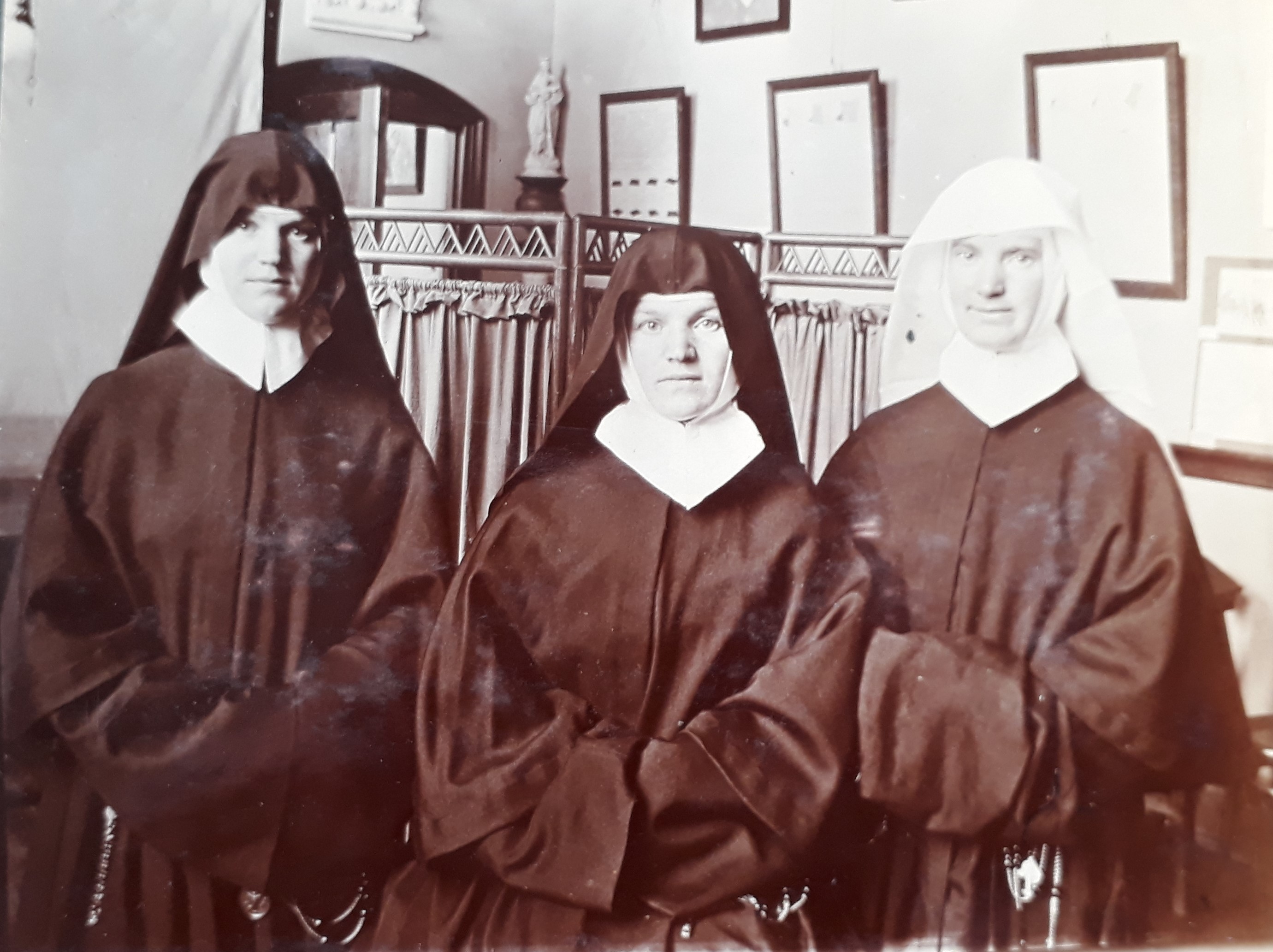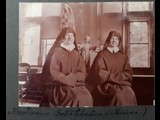Three Sisters of the Golden Vale
The Lives and Apostolates of Sisters Celestine, Thérèse and St John Eagleton

Within a collection of photographs of the Mayfield and Sharon novitiates, I came across a striking portrait of the three Eagleton sisters. Not all the images dating from the early twentieth century provide such a clear likeness of the subject, but this photograph almost feels as if we are standing in front of the three young nuns gathered there. Since I had their names, I decided to consult the necrologies to find out more. To celebrate St Patrick’s Day on Friday, this article will tell the stories of these three women born in Tipperary. The first of the Eagletons who felt called to the SHCJ was Sister Celestine, baptised Norah, who was clothed in 1911, she was followed by her twin sister Therese, baptised Mary Anne in 1913. Sr St John – the youngest of her ‘large and united family’ and baptized Elizabeth - was the final sister to enter the Society in 1915. As lay sisters their ministries focused on keeping each of the SHCJ Houses where they lived running smoothly, in the laundry in Sister Thérèse’s case or in the refectory in the case of both Sister Celestine and Sister St. John.

‘The Twins’, as they are referred to in a Postulant and Novice photograph album, had to handle being confused with one another by the novice mistress, Mother Mary Magdalen. They soon learned to ‘accept responsibility for each other’s good and not so good deeds’. Sadly, the twin sisters never did live together in community since their novitiate at Mayfield, but they remained very close. Sr Thérèse cared for Celestine ‘unstintingly’ at the end of her life.
Perhaps the most profound form of ministry practiced by all three sisters was their kindness to the SHCJ communities they lived with, visiting priests, school children and young people who relied on these sisters for spiritual and emotional sustenance as well as meals. Sister St. John was part of the foundation community of 70 Harcourt Street Dublin, a Hostel for business girls beginning their careers or studying in the city. Since these young women were often living away from home for the first time, Sister St John’s listening ear was yet another important aspect of her role, alongside managing the Hostel dining room, catering for 60 residents. According to her necrology, one day ‘some residents remarked she was their ideal of a saintly nun’.
Sister Celestine carried out her many tasks in houses at Cavendish Square, at Combe Bank, Lancaster and Mayfield diligently and was remembered by one sister as ‘most prayerful, very hard-working, full of fun and Irish wit’. She would welcome priests calling unexpectedly from the Cathedral ‘with the same friendly concern and courtesy’ that she showed her sisters in Community.
During the later period of her life, one of Sister Thérèse’s main ministries was visiting elderly and housebound invalids in the St Charles Borromeo Parish, Ogle Street, London. After 20 years providing this service to the Parish, Sister Thérèse was awarded the Bene Merenti medal, by the office of the Holy Father, for her work. The Annals for Cavendish Square describe a large gathering at the St Charles Borromeo Church of the community and many of Sr Thérèse’s friends. The annalist states ‘we were all very proud of our 84-year-old sister’. An article appeared in the Universe newspaper and Sr Dorothy Watson recorded an interview with her; searches for this recording in the archive are now being made.
As all three sisters joined the SHCJ at a time when communications with the families of Religious were infrequent, it must have been a wrench for both the Eagleton sisters and their family for all three to enter the Society, especially the loving mother often spoken of by the sisters. Nevertheless, despite the challenges of working as a lay sister in the SHCJ from the beginning and through the upheaval of the 20th century, their necrologies show us that love for God and the people around them allowed all three to each make their unique contribution to the happiness of their sisters in Religion and the people their vocations brought to them.
